Silver maple care and growing guide: expert advice for these elegant acers
Learn how to care for a silver maple – a fast-growing, beautiful tree for large backyards
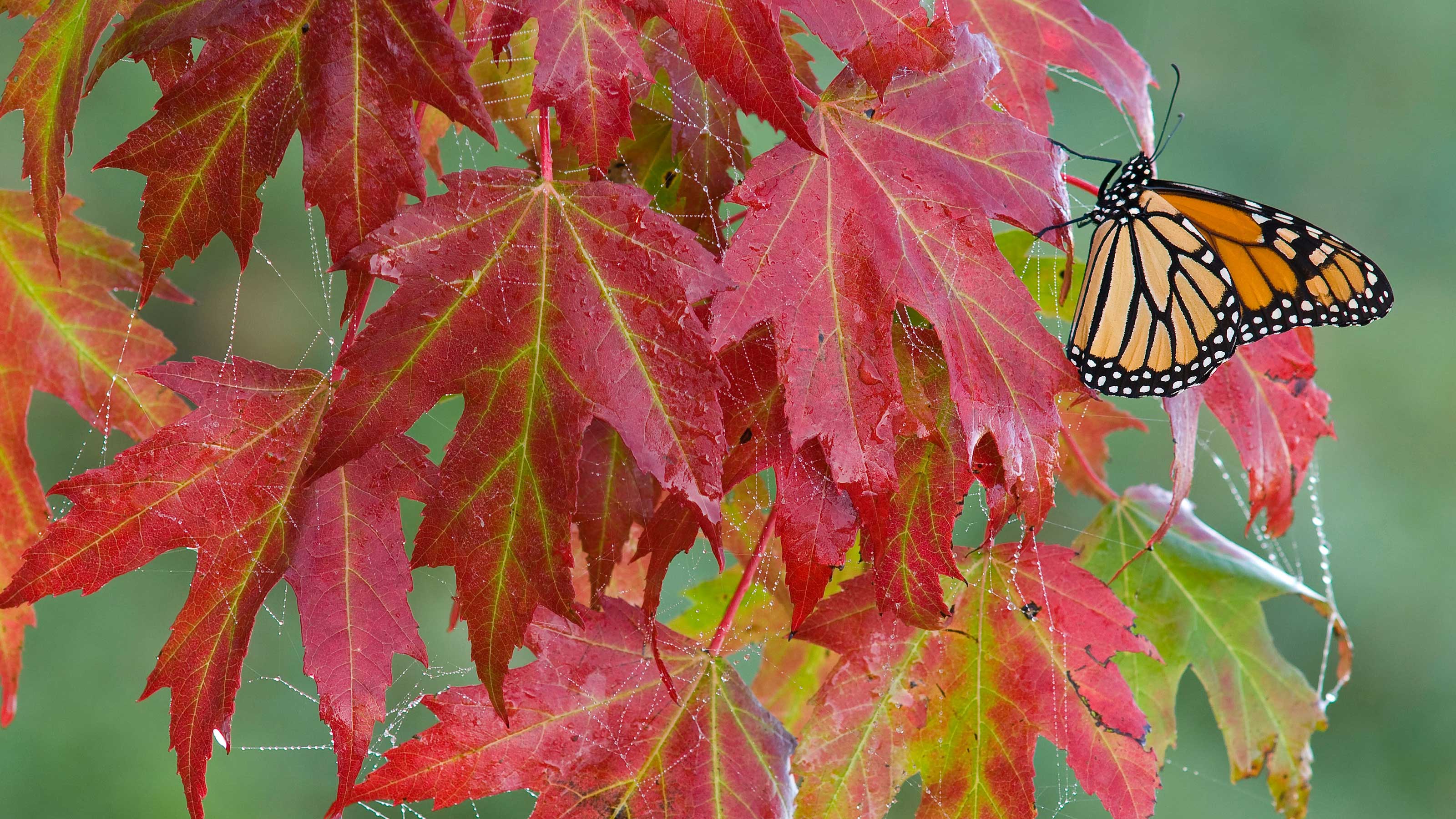

Silver maple is a delight, with its green leaves with their pale gray undersides shimmering gently when lifted by the wind. Its easily-recognisable, deeply-lobed foliage, which bears a close resemblance to the Canadian flag, turns to fiery shades of yellow and red during fall, bringing a vibrant glow to its surroundings.
This backyard tree has a distinctive trunk that branches into a broad crown. Its bark is smooth and light gray to brown in color when young, going on to develop shaggy-looking loose thin plates that become darker with age.
In the US, silver maples produce inconspicuous green-yellow male or red female flowers in early spring, before the appearance of their leaves, providing an early source of nectar for bees. Elsewhere, their blooms can be enjoyed if the weather conditions are warm enough. Winged seeds appear in North America in around late April or May time, but are not so common in the UK and cooler parts of Europe.
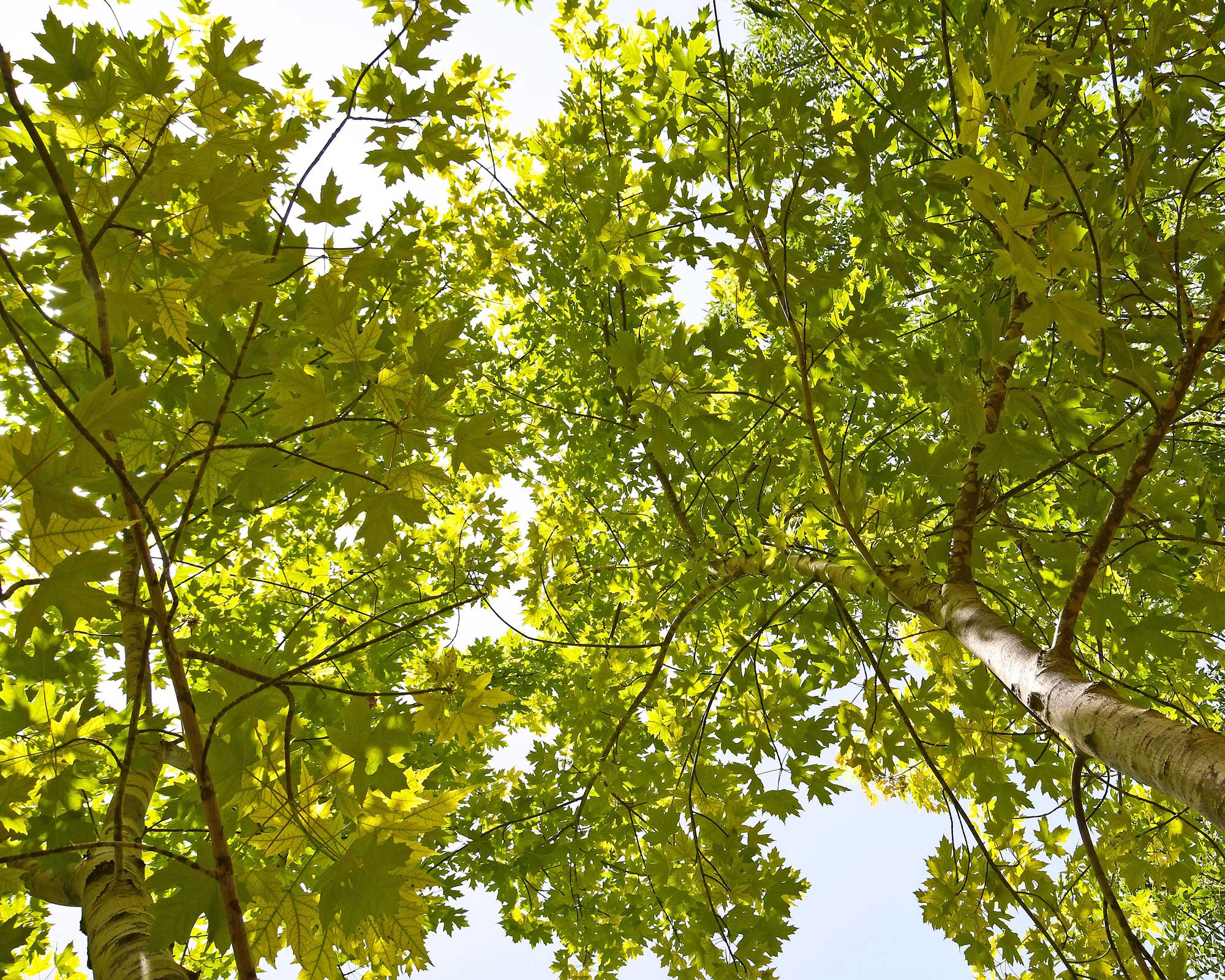
Silver maples are fast-growing, beautiful trees
Known scientifically as Acer saccharinum, the native environment of this tree is southern Canada and the eastern United States, where it’s often found on flood plains, along waterways, or in woodlands. Commercially, it’s sold for soft timber, although, according to dendrologist Rosie Anderson of the nationally-important Westonbirt Arboretum in Gloucestershire, UK, it’s not considered high quality.
The silver maple has been grown in Europe since the 18th Century and was brought to the UK by Sir Charles Wagner in 1725. The organization Forest Research believes this acer has the potential to assist with climate warming in lowland areas of the UK due to its ability to grow in wet conditions and poorer soils.
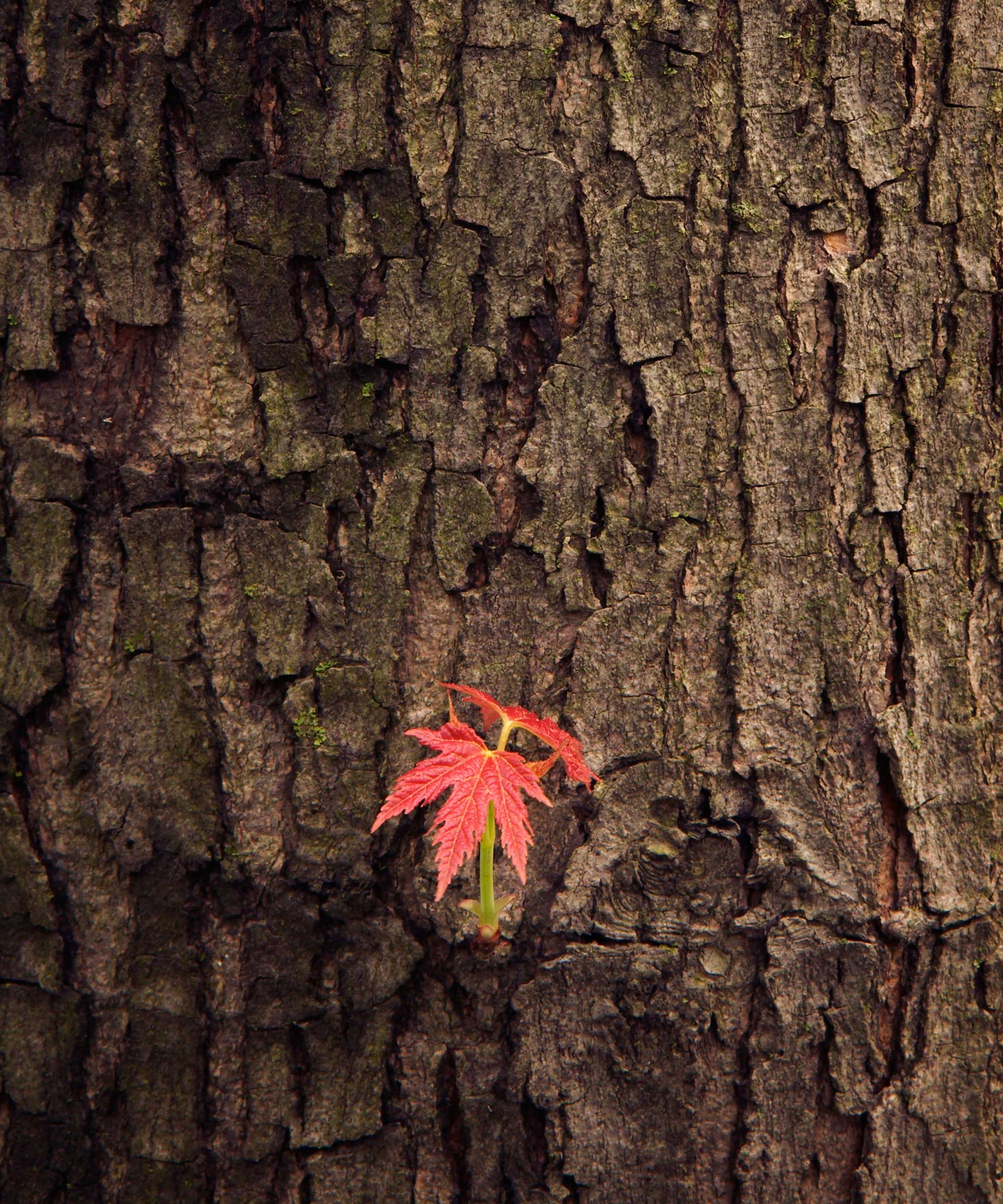
The tree trunks develop loose plates as they mature
Silver maple key facts:
- Plant type: Specimen tree
- Mature size: 65-80ft (20-25m) usually, but can reach 115ft (35m)
- Soil type: All types; does well in damper soil but will adapt to drier conditions
- Soil pH: 4.5 to 7 recommended
- Time of year to plant: Ideally over fall or winter, if the ground isn't frozen
- Flowering time of year: Early spring
- Flower color: Green male flowers and red female flowers
- Leaf color in spring: Green with pale gray/silver underside
- Leaf color in fall: Yellow and red
- Hardiness zones: USDA Zone 3-9 (UK H7)
- Scientific name: Acer saccharinum
- Common names: Silver maple, silverleaf maple, river maple, swamp maple, water maple, white maple, soft maple
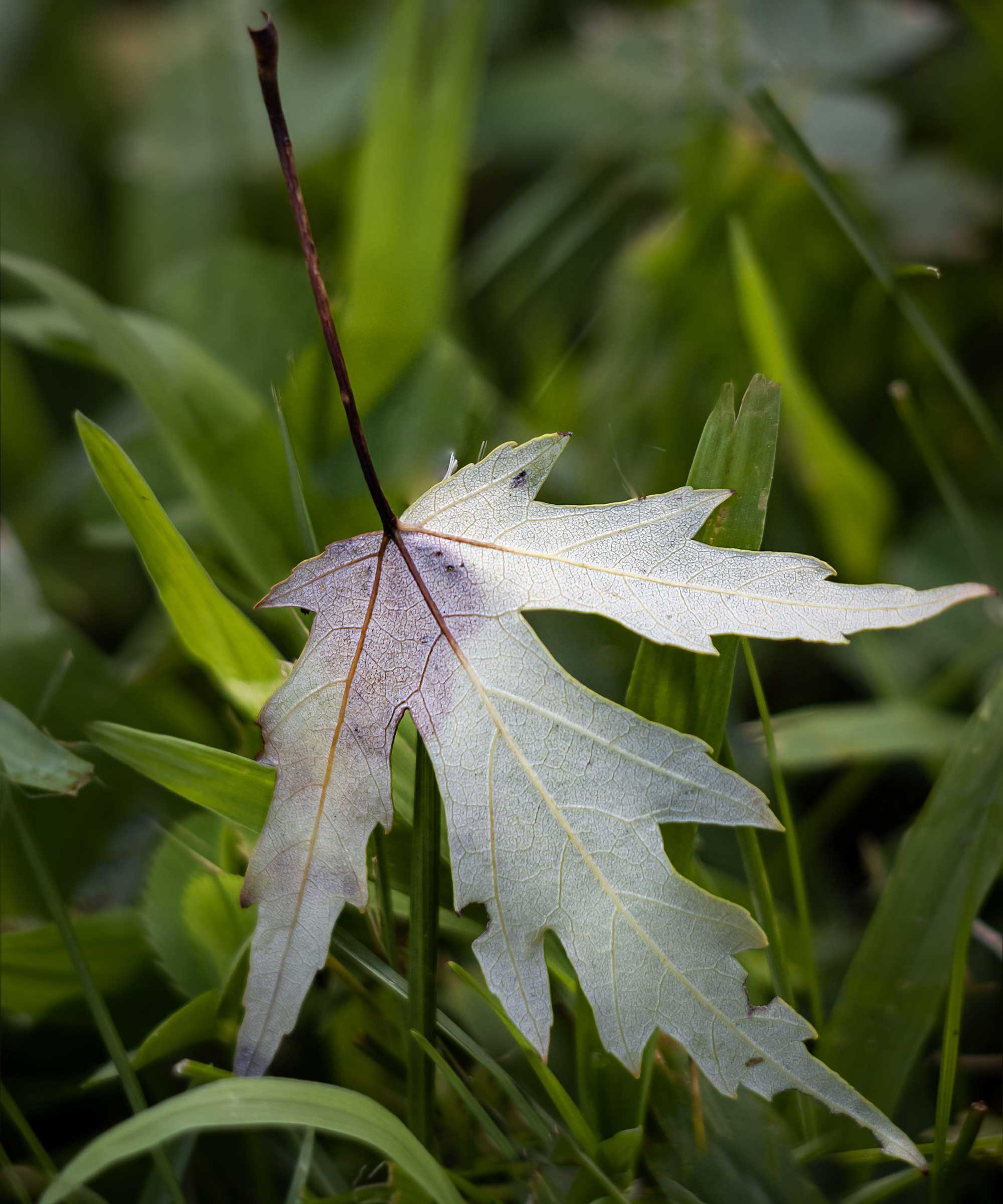
The undersides of silver maple leaves are a pretty, grayish hue
Growth rates for silver maple trees
Silver maple grows quickly when young, reaching its ultimate height after 10 to 20 years and then slowing, and it’s been found to tolerate pollution well. It’s a popular choice for areas of new housing in the US.
Generally, silver maple will reach between 65 and 80ft (20 to 25m), with canopies extending to more than 26ft (eight meters). The tallest recorded specimen in the UK stands at around 100ft (30m) on Willesley Drive at Westonbirt Arboretum. In North America, the honors go to a 116ft (35m) monster in Newberry, Michigan. Usually, these trees live to between 100 and 130 years.
'Silver maple is a fast-growing tree; it establishes well and is very elegant in its branch structure; and it has a lovely interesting leaf, from which it gets its name,' says Kew Gardens’ Head of Trees Kevin Martin.
'The foliage is delightful during a breeze or when ruffled by the wind, exposing the silvery-white coloration on the underside of the five-lobed foliage,' adds David Jewell, curator of the Sir Harold Hillier Gardens in Hampshire.
Kevin agrees: 'There’s one growing along the Kew Road that I check regularly and it’s amazing to watch. All the leaf-bearing branches are very slim, which is why the foliage moves so much in the wind, producing a wonderful fluttering effect.'
- Shop silver maple trees in the US: view at Fast Growing Trees
- Shop silver maple trees in the UK: view at Ashbridge Nurseries
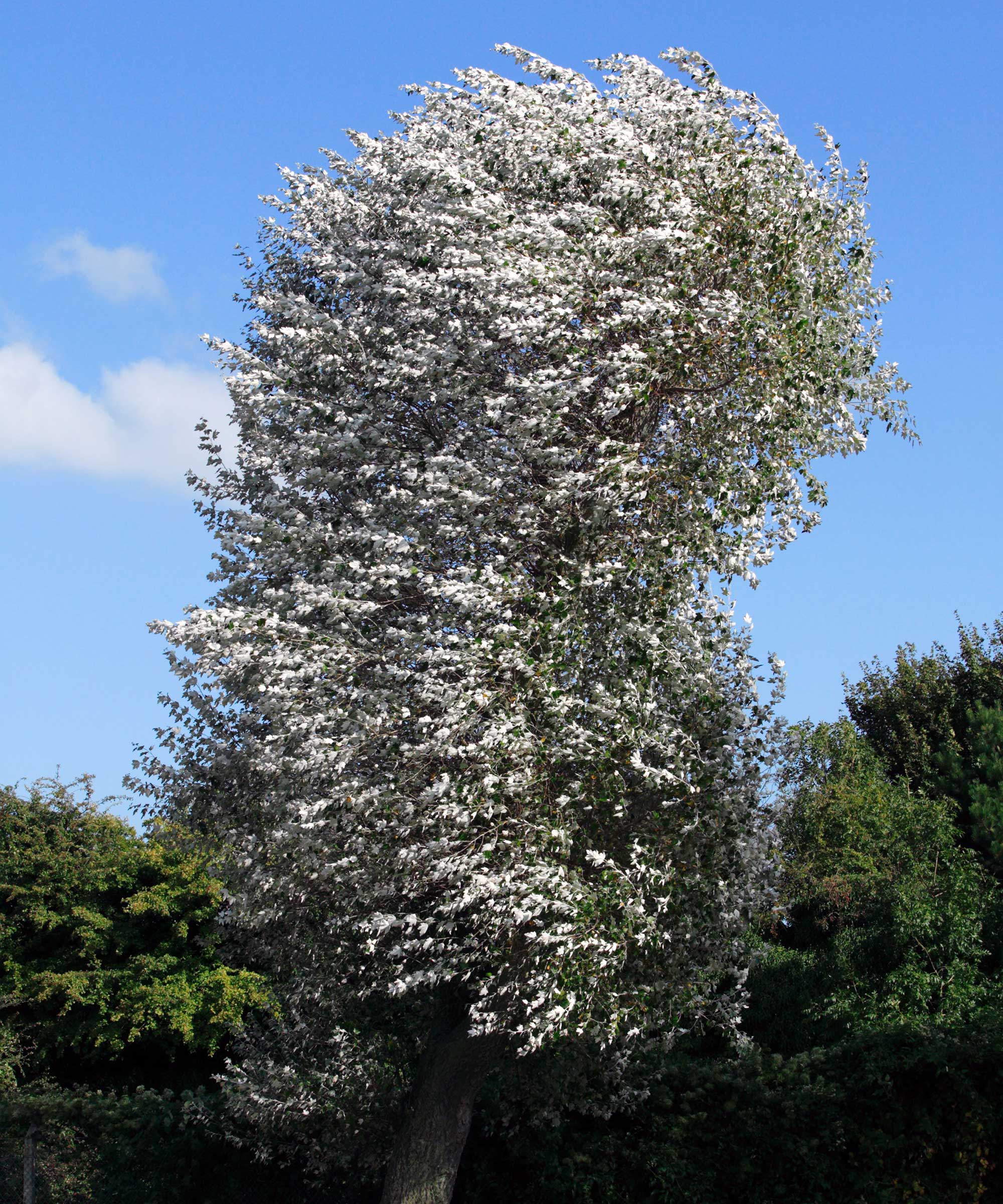
Silver maples are a spectacular sight in the breeze
Types of silver maple
Consider these varieties of silver maple when choosing a tree for your backyard:
- A. saccharinum ‘Pyramidale’, sometimes known as ‘Fastigiatum’, has a column-like structure when young, but becomes round or oval-shaped as it matures. The base of its crown is formed by a small number of heavy, upright branches. It grows to around 66ft (20 meters) tall and its canopy is around half as wide as its height. Unfurling leaves in spring have blue-red tints before turning green. In fall, the foliage turns yellow. This cultivar is less prone to breaking branches. Kevin Martin of Kew Gardens says it’s a good choice for avenue planting.
- A. saccharinum f. laciniatum ‘Laciniatum Wieri’ has lower branches that hang down and its leaves have sharply-cut narrow lobes. The foliage has bronze tints in the spring and is yellow during fall. This cultivar grows to around 66ft (20 meters).
- A. saccharinum ‘Lutescens’ has orange-yellow leaves when young, which mature to soft yellow-green over summer.
- A. saccharinum ‘Pendulum’ is an unusual form with more ‘pendant’, or hanging, branches.
- A. saccharinum ‘Born’s Gracious’ is a new cultivar from Germany with divided, filigree-like maple leaves. It grows to around 66ft (20m).
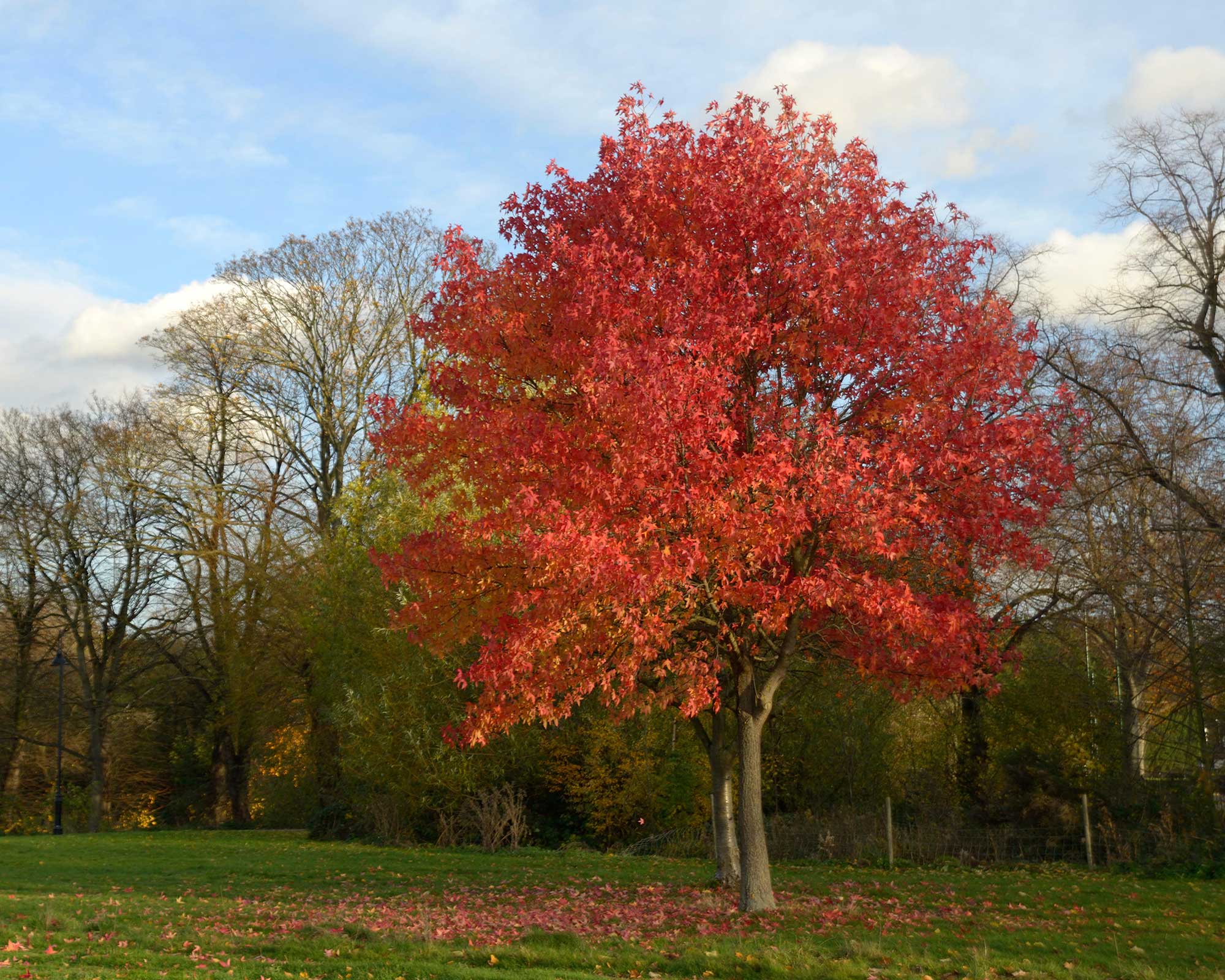
Silver maples need plenty of space
How to use silver maple trees in your yard
Silver maple trees are a great choice for woodland gardens, for introducing shade to a large yard, or for planting on especially wide verges that are far enough from roadsides should branches break off. This tree is also suited to wet areas.
Be mindful of prevailing winds, which can have a detrimental effect; plant them a good distance away from a property to avoid damage from falling branches, or even toppling trees – although in most cases silver maples thrive for 130 years or more.
It’s also important to be aware that the strongly-branching shallow roots of Acer saccharinum are capable of pushing up hard surfaces, so keep them well away from your patio, deck or driveway.
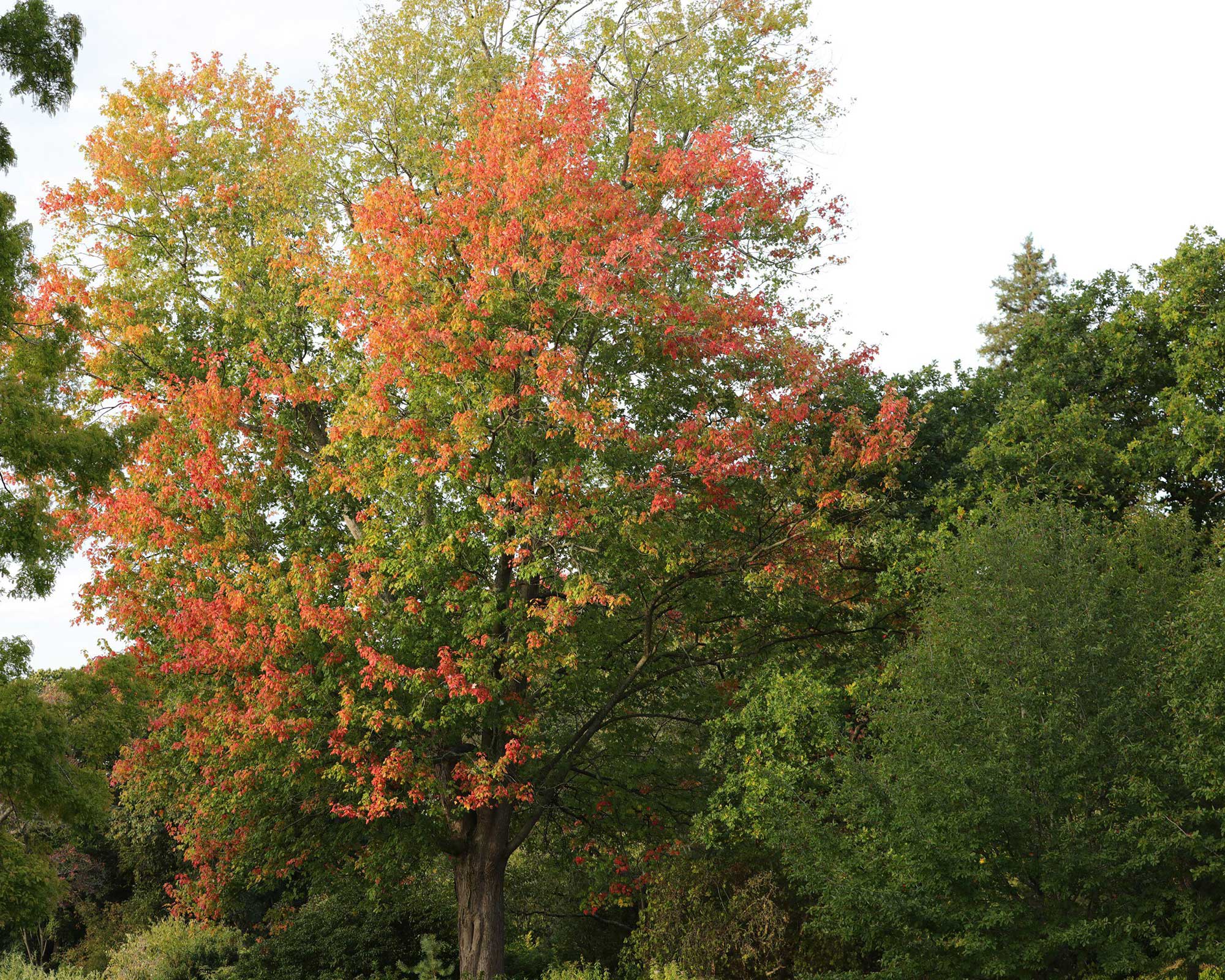
Consider the position of your silver maple carefully
When, where and how to plant silver maples
Plant these trees in a sheltered spot in full sunshine for good fall color, or in partial shade. 'Ideally, plant it where its color can be seen to its full effect, but make sure it won’t be in the teeth of a gale,' advises Ed Landford of Landford Trees in Wiltshire, UK.
This tree grows in all types of soils and does well in areas with plenty of moisture, something that those gardening in drier areas should bear in mind. For best results, plant dormant, young bare root trees during the late fall and winter months, as long as the ground is not frozen, so that they receive plenty of moisture while they’re becoming established. Prepare the soil before planting by loosening it up, before making a hole that’s large enough to accommodate the root ball. Replace the soil, firm it down and water well. In especially exposed conditions, this tree may benefit from staking while it’s becoming established. Deer fencing may also be advantageous.
Smaller trees are cheaper to buy, easier to handle and will cope better if there’s little in the way of aftercare. Larger trees will create more of an impact and will grow well if watered regularly while they’re getting established.
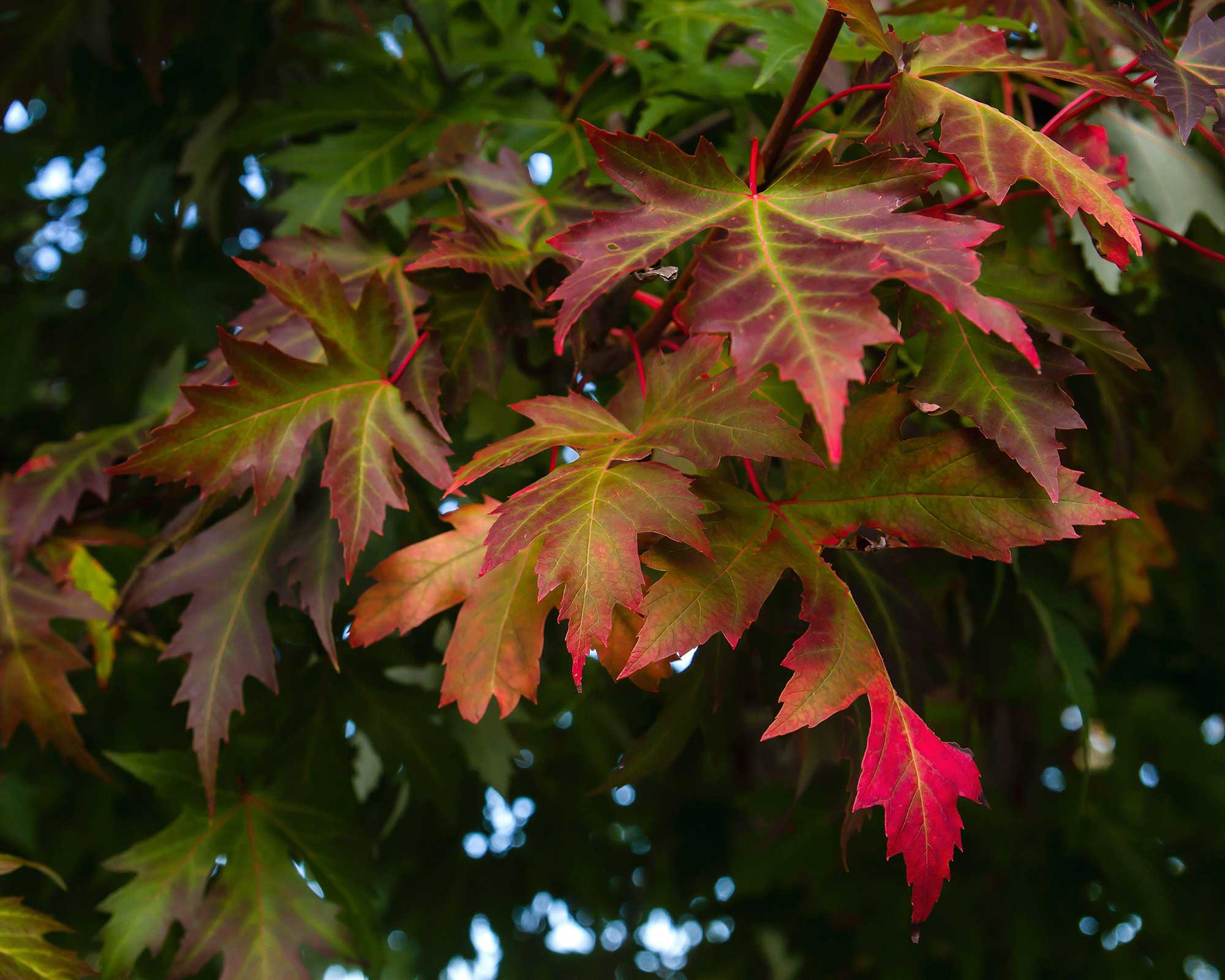
Planting in full sunshine will enable their fall color to flourish
Silver maple care tips
Water regularly after trees are first planted and mulch with well-rotted garden compost to help the soil retain moisture.
These trees don’t need a huge amount of attention in terms of maintenance. Their well-branched framework needs little pruning. Generally all that’s needed is for diseased, damaged, congested, or crossing branches, or branches growing in the wrong direction, to be removed in late winter or early spring. Harder pruning can spoil a tree.
This tree is a prolific self-seeder in the US, although rarely produces seed in the UK due to the nature of its climate. Remove any seedlings growing close by when they're young, to avoid competition for moisture and nutrients.
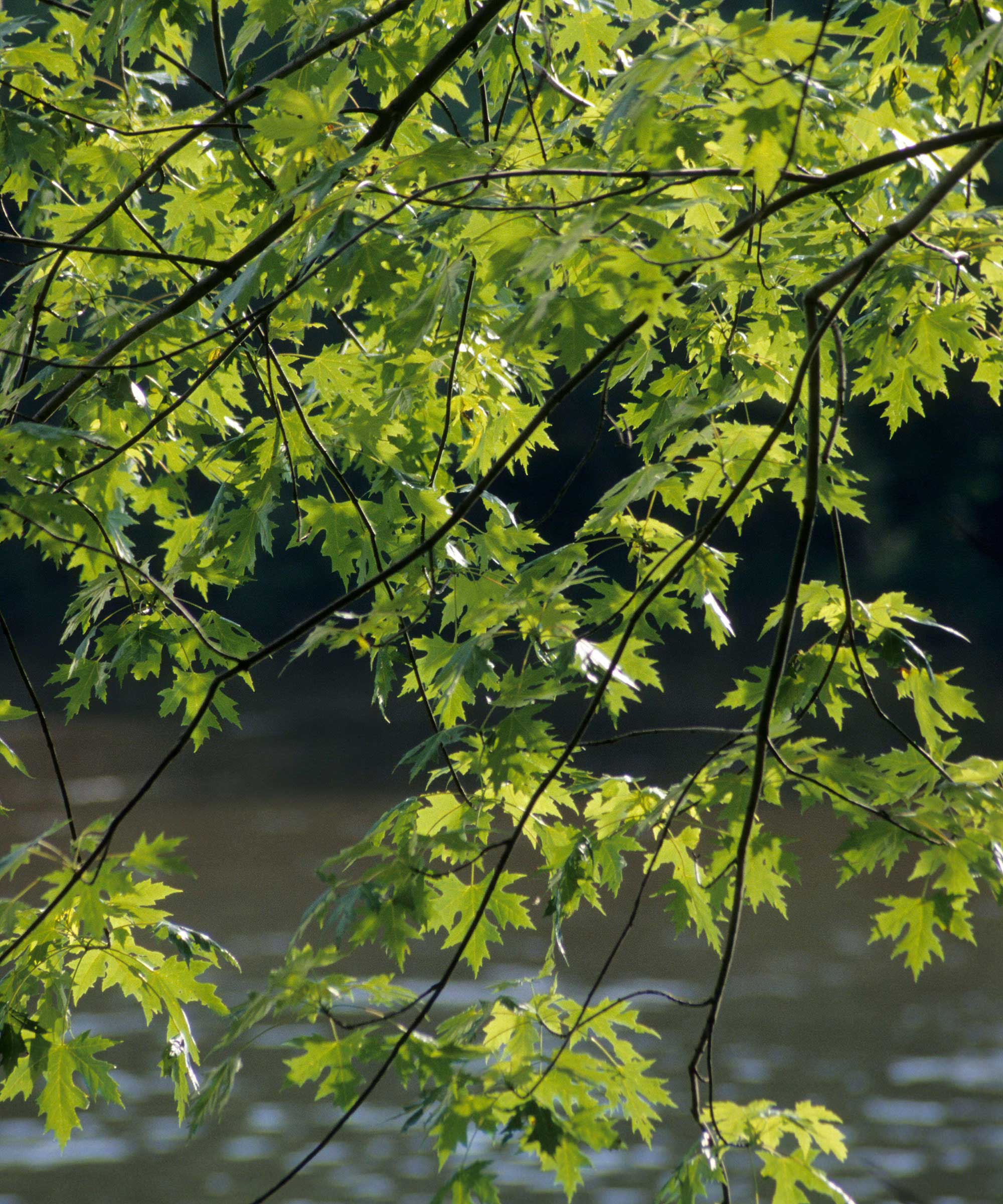
These trees are generally easy to look after once they're established
How to make more silver maple trees
Silver maples can be grown from seed, although be careful to gather these winged nutlets, or samara, from spots where there are no red maples (Acer rubrum). This is because the two can cross-pollinate, resulting in a hybrid known as the freeman maple Acer x freemanii.
The easiest way to sow silver maples is to push the ‘nut’ end of the winged seed into a pot of general-purpose compost or garden soil. To increase the chances for success, remove the wing and the outer skin to reveal the embryo, place side-down about half an inch (1cm) in the compost, and cover. Examine each seed and reject any that appear dry and wrinkled – instead, look for those that are green and fresh-looking. Pots can be placed in a greenhouse or in a sheltered spot outside. Viable seeds should germinate within days, if not a couple of weeks.
It’s also possible to take softwood plant cuttings in the summer and hardwood in winter, ideally from younger trees. Dip cuttings in rooting hormone powder [available on Amazon], place them into moist soil, and cover with a plastic bag to increase humidity.
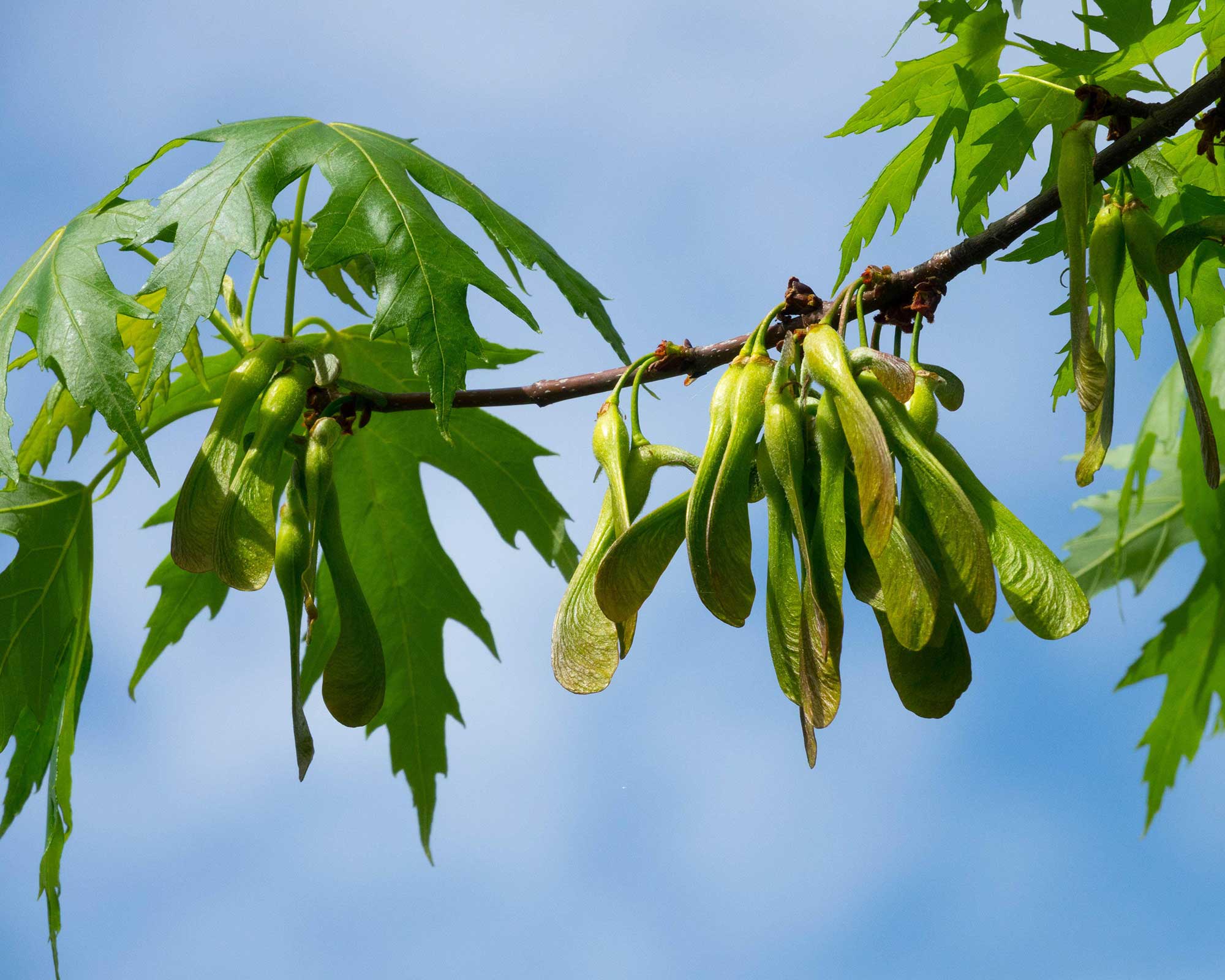
You can plant silver maple seeds
Common problems with silver maples
In the US and Canada, the silver maple is vulnerable to sapstreak disease, caused by the fungus Ceratocystis virescens, which is fatal to infected trees. The UK organization Forest Research says this pathogen is not present in Europe.
All maples are susceptible to verticillium wilt, a vascular disease that causes leaves to wilt, go brown and drop, and which can cause the sudden death of the tree.
Common foliage diseases in the US include gray mold spot, tar spots and powdery mildew.
Sap-sucking aphids will sometimes attack buds and the undersides of leaves. Horse chestnut scale, identified as white egg masses on trunks and branches, can sometimes be seen but doesn’t cause serious damage.
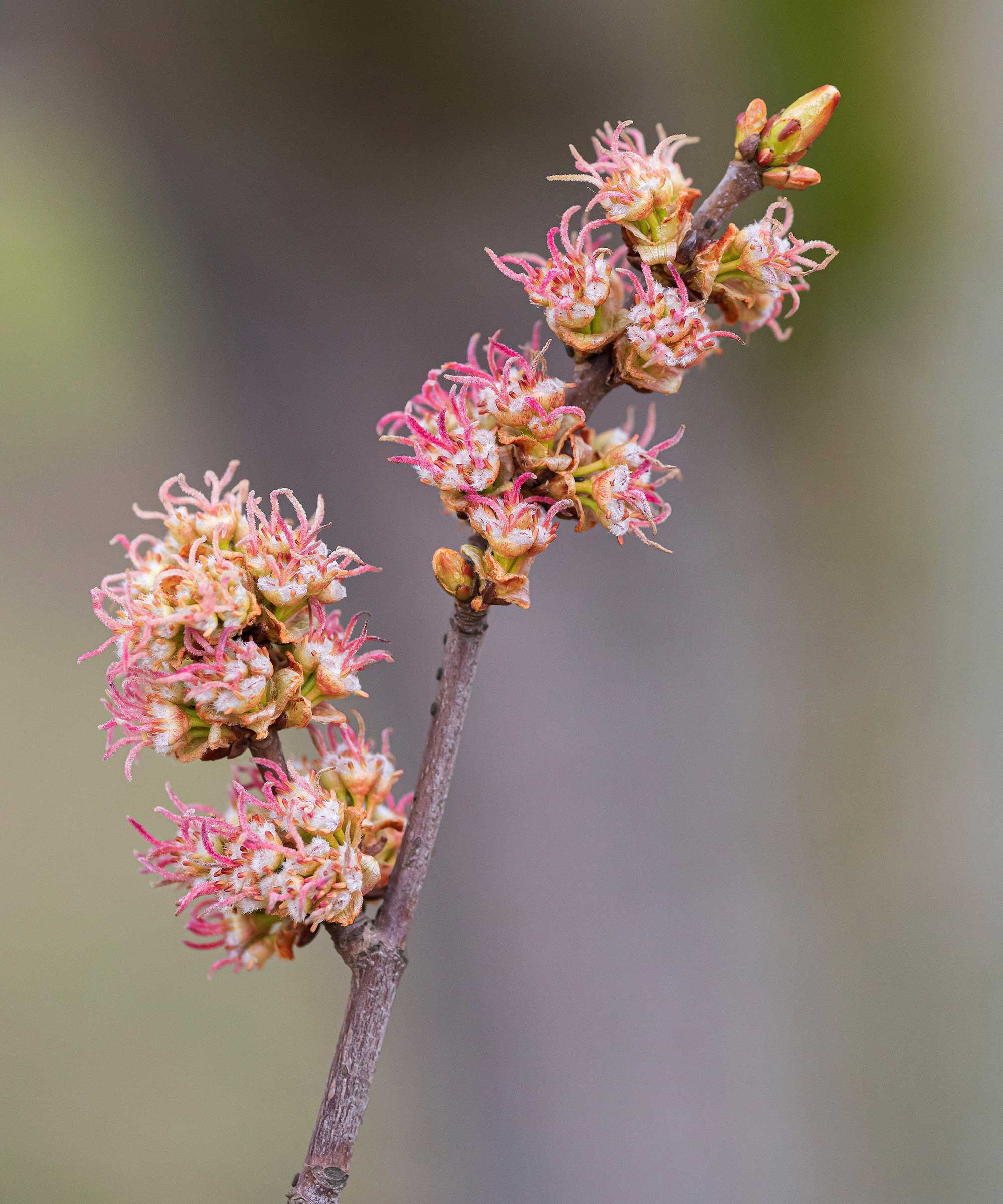
In warm regions, silver maple trees can develop springtime flowers
What are the disadvantages of silver maple trees?
The speed of growth can lead to silver maples having weak attachments, which means it’s prone to branches breaking during high winds or when weighed down with ice or snow. This means care is needed when choosing a position for this tree. It’s not one of the best trees for small gardens, or for planting in an urban environment by roads, says Kevin Martin. Also, as mentioned, the shallow roots are known to lift pavers.
'An open parkland situation, with rich, cool soil would be ideal,' Westonbirt Arboretum’s Dendrologist, Rosie Anderson, says.
Despite its drawbacks, the silver maple is a graceful tree that’s loved by many, so if you've got a large garden, it could be a perfect addition.

Sue Bradley has been writing about gardens, gardeners and gardening for a variety of magazines and newspapers for more than 15 years. She has a level 2 diploma in practical gardening from the Royal Horticultural Society and loves learning more about plants, soil and gardening history. Any spare time she’s able to muster is spent on her allotment in the Cotswolds.
